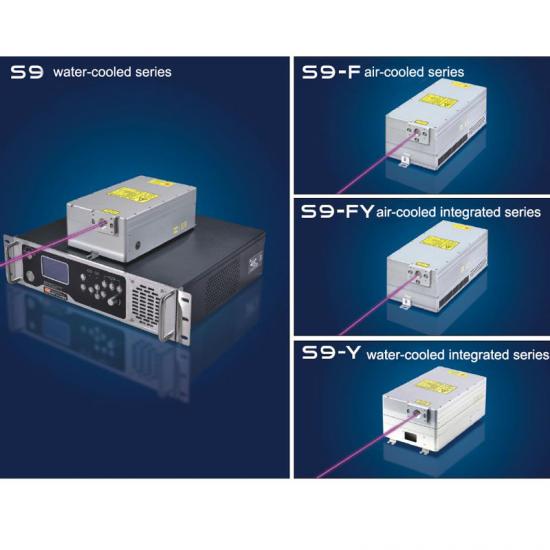Blog más reciente
Aplicación de láser ultravioleta de nanosegundos de 355 nm en pulido de zafiro
Jul 21 , 2022Aplicación de láser ultravioleta de nanosegundos de 355 nm en pulido de zafiro
Como material industrial muy importante, el zafiro tiene las características de alta transmisión de luz, alta resistencia al desgaste, alta dureza y alta estabilidad. Es ampliamente utilizado en la industria, la investigación científica, la industria aeroespacial y otros campos, y a menudo se utiliza en la fabricación de epitaxia de GaN. crecimiento de capa, materiales de sustrato LED, etc.
La aplicación de zafiro en los campos anteriores tiene requisitos estrictos sobre la calidad de su superficie. Se requiere que la rugosidad de la superficie del zafiro sea inferior a 1 nm. El sustrato de zafiro utilizado para los LED de brillo alto y brillo ultra alto requiere una red de superficie completa, ultra suave, sin daños. Sin embargo, debido a sus características de dureza y fragilidad, el pulido mecánico tradicional, el pulido químico, el pulido térmico, el pulido por electroerosión y otros métodos son propensos a microfisuras, rayones, abolladuras y otros problemas en la superficie. Por lo tanto, el pulido de ultraprecisión del zafiro se ha convertido en una gran dificultad en los campos de fabricación relacionados.

uv laser | green laser | Ultraviolet lasers | uv dpss laser | nanosecond laser | UV laser source | Solid State Lasers
Laser polishing is a promising special processing technology. Its principle is that a high-energy-density laser beam scans the sapphire surface, and the sapphire surface absorbs the energy of laser photons. When the absorbed energy reaches the destruction threshold of the sapphire material, the sapphire material produces Decomposition cracking, melting and vaporization, etc., to achieve material removal to form a polished surface.
This polishing process can use the ultraviolet laser output by the 355nm ultraviolet nanosecond solid-state laser developed and designed by RFH, which has high single-photon energy and high power density, and realizes material removal by interacting with the material, and its pulse width is very high. Narrow, about 20ns, the laser action time is short, and the thermal effect is very small, especially suitable for hard and brittle materials that are difficult to process by conventional methods.
It is worth mentioning that the forbidden band width of sapphire is 9.9eV, the bond energy of AL-O bond is 6.063eV, and the single-photon energy of 355nm UV laser is 3.5eV, which is less than the energy of chemical bond breaking of sapphire crystal. In order to achieve polishing on the sapphire surface, it needs to be removed by multi-photon absorption, initiating or controlling chemical reactions between materials, resulting in the breaking and reorganization of sapphire chemical bonds, the destruction of the lattice structure or the transition of energy levels, generating new substances or making some materials. Leave the body, so as to achieve the purpose of processing materials. Since the surface temperature can reach above the boiling point in a relatively short time, the use of a 355nm UV laser can suppress the generation of microcracks during the polishing process.
It can be seen that the polishing process is the result of photochemical and thermal effects. The study also found that laser polishing is not only related to the energy density of the laser, the repetition frequency and the surface condition of the sapphire, but also to the scanning method of the laser, the incident angle of the beam, and the scanning speed. Therefore, in the actual polishing process, it is necessary to adjust the relevant process parameters in advance to obtain the expected polishing effect.
Using laser to polish sapphire can well avoid the drawbacks of traditional grinding operations, so that it can obtain good polishing effect, high degree of automation, high efficiency, and the non-contact processing method has little damage to the sapphire material matrix These advantages are particularly suitable for manufacturers to increase production capacity, improve quality and reduce costs.